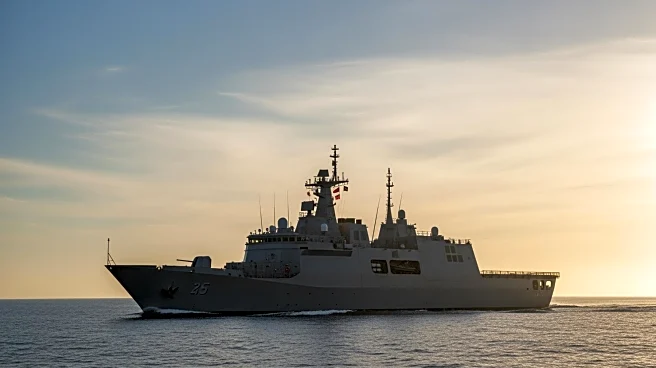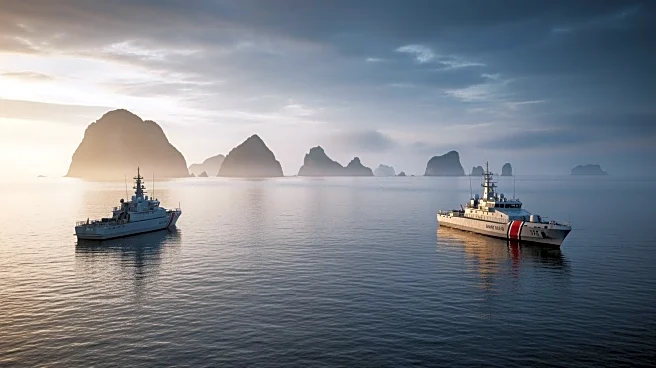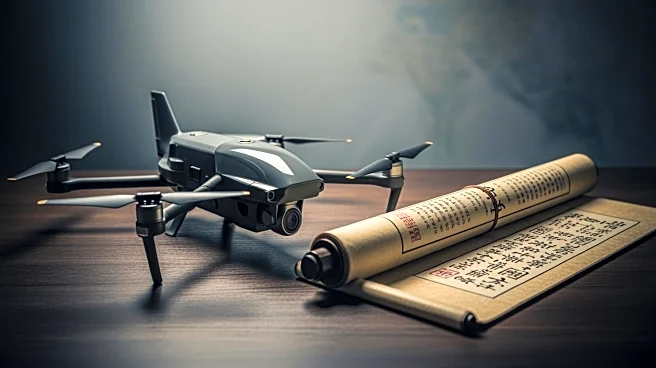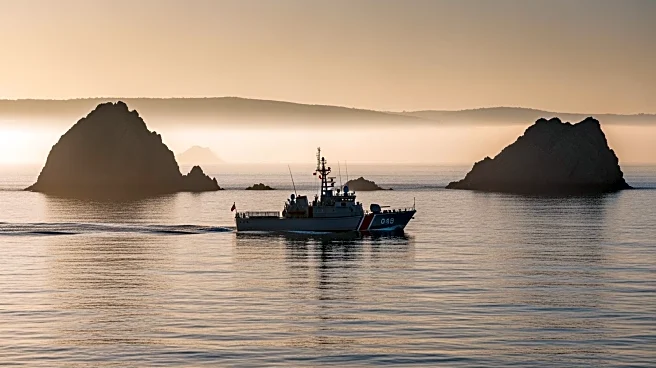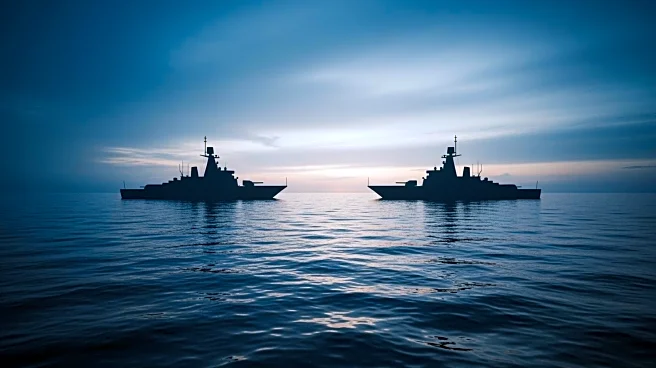What's Happening?
Japan's Self-Defense Forces have added a new amphibious landing ship, the Aozora (LCU-4153), to their fleet as part of the Joint Maritime Transport Group. This addition is part of a broader initiative
to strengthen mobile deployment capabilities in the southwestern region, particularly in response to regional security concerns such as China's growing threat towards Taiwan. The Aozora, capable of transporting troops and supplies to shallow-water islands, enhances Japan's logistical capacity to respond to contingencies. The ship is expected to enter service by the end of the year, reinforcing Japan's strategic defense posture.
Why It's Important?
The incorporation of the Aozora into Japan's Self-Defense Forces reflects the country's commitment to enhancing its defense capabilities amid regional security challenges. By improving its maritime transport capacity, Japan is better positioned to respond to potential threats and ensure the security of its southwestern territories. This development underscores the strategic importance of the Nansei Islands and highlights Japan's proactive approach to defense in light of geopolitical tensions. The move may influence regional dynamics, prompting neighboring countries to reassess their own defense strategies.
What's Next?
As Japan continues to bolster its maritime defense capabilities, further investments in transport ships and logistical support vessels are expected. The expansion of the Joint Maritime Transport Group may lead to increased collaboration with allied nations, enhancing regional security cooperation. Japan's focus on defense strengthening may also prompt discussions on broader security policies and alliances, potentially influencing diplomatic relations in the Asia-Pacific region.
Beyond the Headlines
Japan's defense strategy highlights the ethical and geopolitical dimensions of military preparedness in response to regional threats. The emphasis on transport capabilities reflects a shift towards more agile and responsive defense measures, raising questions about the balance between military readiness and diplomatic efforts. The development may also impact cultural perceptions of Japan's defense posture, influencing public opinion and policy debates on national security.
